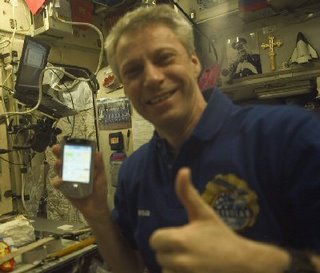 Inventory Management is always a big issue, what do we have on stock, what do we need to order, what item is located where. This is the case for major companies, a simple household and even for the international space station ISS . Due to the volume of articles onboard Station, and the fact that Station will be on orbit continuously for at least 15 years, the need arises for a system of tracking the location and status of items that have been stored on board. The Inventory Management System (IMS) fulfills that purpose.
Inventory Management is always a big issue, what do we have on stock, what do we need to order, what item is located where. This is the case for major companies, a simple household and even for the international space station ISS . Due to the volume of articles onboard Station, and the fact that Station will be on orbit continuously for at least 15 years, the need arises for a system of tracking the location and status of items that have been stored on board. The Inventory Management System (IMS) fulfills that purpose.This application is based on the use of barcode labels. Starting in March 2007, the old barcode reader terminals will be replaced by PDAs. These PDAs will be equipped with a barcode reader and will be connected to the IMS via a wireless network.
In the near future, PDAs will start being used as integrated components of the IMS.
A special application, known as the PDA Depressurisation Program (PDP) and conceived by the astronaut Thomas Reiter, has been developed by ESA to compute the ‘egress time’, – the time that is left before having to abandon the ISS in the event of depressurisation.
This application, tested for usability by Reiter during his long duration mission – from July to December 2006 – is currently undergoing qualification by NASA and will become part of the standard set of software packages loaded on each astronaut PDA.
PDAs have been investigated as alternative or complementary platforms for some of the applications currently running on the ISS laptops. The idea is to use a PDA in those situations where a laptop might be inconvenient because it is too big or cumbersome.
An example of laptop to PDA conversion, developed by industry using ESA research and development funding, is the porting of the ESA/NASA International Procedure Viewer (IPV) application. In this type of conversion, the critical factor is adapting the laptop based user interface to a new platform where the available screen area is significantly smaller.
Another area of research is the use of the PDA as a voice or speech processing platform. Combined with wireless communication, PDAs could become suitable devices for crew-to-crew communication (VOIP applications) and crew-to-system communication (speech synthesis and speech recognition One limitation for applications employing voice sounds for either input or output is the noise that is always present on board the ISS, most of which is generated by the ventilation system. The PDA Depressurization Program uses speech synthesis to notify the crew members about the time remaining before egress. However, ambient sound is not an issue for this application because, if depressurization occurs, the ventilation system is automatically switched off as safety measure.
No comments:
Post a Comment